By Maxine Carter-Lome, publisher
![August 1954 cover featuring Young Americana Fashions for 1954 during the “Decade of [Jennifer] Daves”](https://journalofantiques.com/wp-content/uploads/2022/06/August-1954-226x300.jpg)
the “Decade of [Jennifer] Daves”
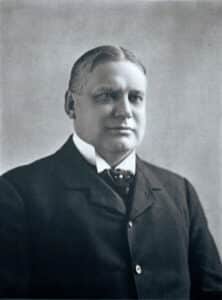
Turnure conceived Vogue as “a dignified authentic journal of society, fashion, and the ceremonial side of life,” targeted at “the sage as well as the debutante; men of affairs as well as the belle.” In fact, the inaugural cover featured a black-and-white drawing of a debutante by A. B. Wenzel. This same artist would later illustrate Edith Wharton’s House of Mirth, a Gilded Age tragedy about the New York elite, who formed the core of Vogue’s earliest audience.
Turnure’s Vogue cost 10 cents and covered news of the local social scene, traditions of high society, and social etiquette; it also reviewed books, plays, and music. It quickly became de rigueur reading among the elite and the aspirational.
Condé Montrose Nast, the founder of Condé Nast Publications, purchased Vogue in 1909, three years after Turnure’s death, changing everything about the magazine except its name, which means fashion in French.
Condé Nast’s vision for Vogue was a publication focused almost entirely on women and fashion. In a few short years, he transformed Vogue from a social gazette with a limited audience into a more populace women’s fashion magazine focused on beauty, composure, and etiquette. Nast also turned Vogue into a biweekly publication (Vogue turned monthly in 1973), and looked to his covers to create traction for the magazine’s editorial and fashion point of view. The new Vogue quickly became known for its distinctive covers, relevant editorial, and award-winning fashion images.
Nast died in 1942 having realized his vision, turning Vogue into a successful business and the women’s magazine we recognize today. Nast was also credited with introducing color printing and the “two-page spread” to Vogue pages, and replacing the magazine’s illustrated covers with photographic images.
Today, Vogue is a monthly fashion and lifestyle magazine covering the novelties of fashion and beauty with curated editorial topics focused on haute couture fashion, beauty, culture, living, and runway. Vogue’s influence in the fashion world is unmatched, as is the magazine’s ability to turn models into household names and launch the careers of new designers. Here in the U.S. and around the world with 26 international editions and a massive international social media following, Vogue is the fashion industry’s bible and the inspiration behind past and future generations of designers, fashionistas, and young girls who imagine themselves on the cover of Vogue.
The Cover of Vogue
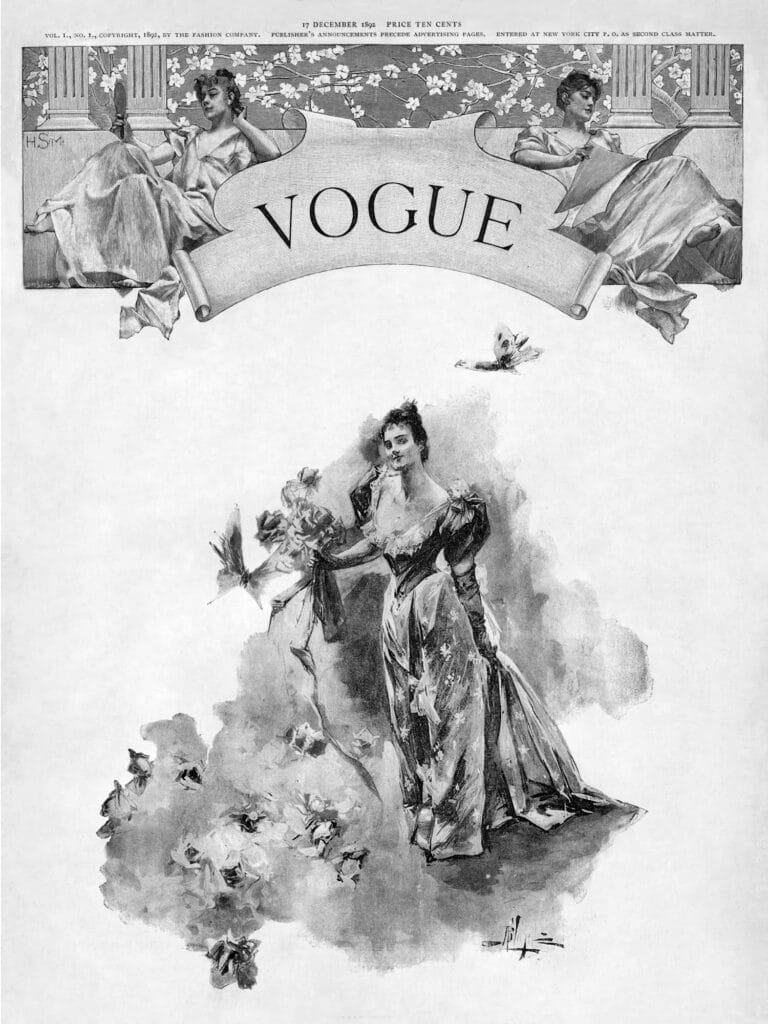
Few media opportunities are more desired by models, celebrities, actresses, and anyone who loves fashion than being on the cover of Vogue. It sky-rockets careers, defines moments in time, and makes fashion history.
In the early years, Vogue featured the best illustrators of the day on its covers, including A. B. Wenzel, Edouard Garcia Benito, and Frank Xavier Leyendecker. Today, these early illustration Vogue covers by now iconic illustrators of the early 20th century command the greatest resale value. Vogue abandoned illustration for fashion photography when it was recognized as an art form in the mid-1930s, leading to a decline in the use of working illustrators among publications across the board.
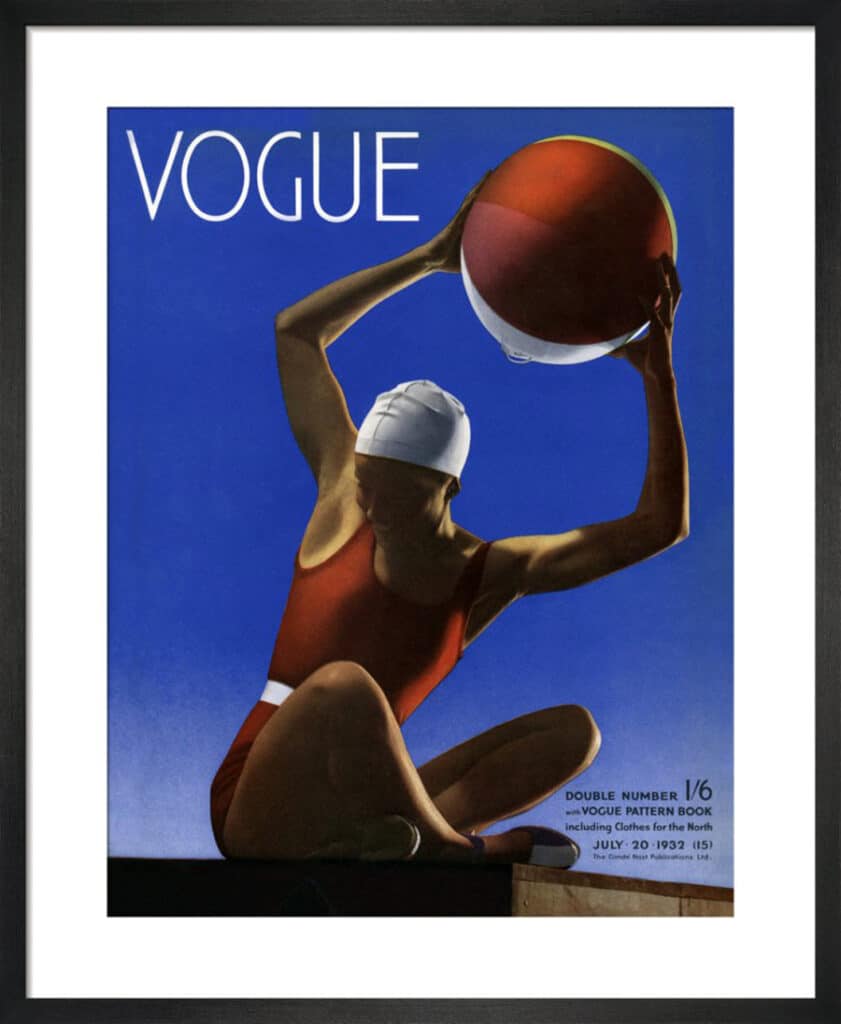
The July 1932 Vogue cover became one of the first magazines to print a color photo on its cover. The photograph was taken by renowned photographer Edward Jean Steichen and portrayed a woman swimmer holding a beach ball in the air. Over the decades, the editors at Vogue collaborated with the best, most visionary photographers from around the world to produce award-winning covers and photo spreads for the magazine that is consistently sophisticated, aspirational, buzz-worthy, and occasionally revolutionary. Over the decades, photographers such as Irving Penn, Cecil Beaton, Richard Avedon, Herb Ritts, Norman Parkinson, Annie Leibovitz, Helmut Newton, and Peter Lindberg, among others, shot what are now recognized as iconic Vogue cover images.
Aside from the photography and a stunning array of beautiful high fashion models, Vogue’s covers are revolutionary in other ways, as well. The April 1944 cover featured Salvador Dalí’s signature surrealist dystopian landscape for its Mid-Spring Fashion issue. Vogue put its first African American model, Beverly Johnson, on the cover of its August 1974 issue.
Vogue covers underwent another seismic shift when Anna Wintour took over as editor in 1988. Wintour immediately transformed Vogue covers by emphasizing the woman’s body, rather than just her face, and is credited with introducing Hollywood actresses and other prominent celebrities, instead of just traditional fashion models, to the covers of Vogue. This dramatic departure for a serious fashion magazine brought the cult of celebrity to magazine covers of publications around the world.
Editorial Leadership
Since Nast’s death in the early 1940s, Vogue has seen a turnover of highly influential editors at the helm, switched-out to keep the magazine relevant in fast-changing times for fashion and women.
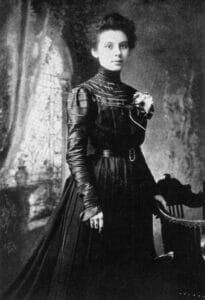
Edna Woolman Chase
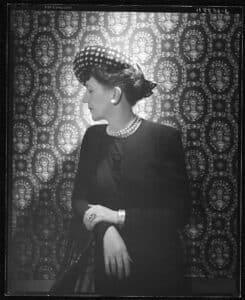
Edna Woolman Chase, who started out at Conde Nast addressing envelopes, held her tenure as Editor of Vogue the longest: 37 years. When she stepped down in 1952, Jessica Daves took over as editor-in-chief to reign over the decade known as the magazine’s “powerful years.” As Author Rebecca C. Tuite noted in In Vogue: The Jessica Daves Years, “Daves led a quiet charge for excellence during one of the most challenging, transformative, and rich decades in the magazine’s history.”
Daves believed that “taste is something that can be taught and learned”, and she edited Vogue with the conviction that it should be “a vehicle to educate public taste.” While fashion coverage remained a priority, Daves also elevated the written content of American Vogue, particularly championing more robust arts and
literature features.
The Daves era of Vogue came to an end in 1962, when Diana Vreeland joined the magazine (first as associate editor, and then, following Daves’s departure in December 1962, as editor-in-chief). The two women had diametrically opposed approaches to editing Vogue: Daves famously declared, “I respect fashion … it is exciting … but I am annoyed at people who treat it as a joke, who constantly take sledgehammers to it … it’s a very serious business.” On the other hand, Vreeland believed, as she was quoted as telling art director Alexander Liberman, “it’s only entertainment,” and conversely led the magazine into a period of youth and vitality, but also extravagance, luxury, and excess. A five-week shoot in Japan with photographer Richard Avedon and ‘60s It-girl Veruschka Von Lehndorff was rumored to have cost $1 million.
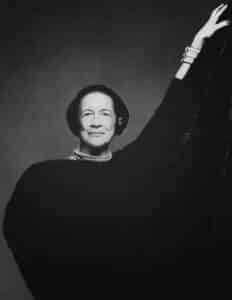
American Vogue under the leadership of Diana Vreeland in the 1960s became the symbol of a new era – more creative, emancipated, and sexy. To appeal to the youth of the sexual revolution, Vreeland shifted the magazine’s focus more to contemporary fashion and editorial features that openly discussed sexuality. Toward this end, Vogue extended coverage to include East Village boutiques and features with “downtown” personalities; a radical departure for a magazine focused on high-end fashion and lifestyles of the rich and famous.
In the 1970s, Vogue underwent yet another extensive editorial and stylistic shift under Grace Mirabella. Mirabella states that she was chosen to change Vogue because “women weren’t interested in reading about or buying clothes that served no purpose in their changing lives.” She was selected to make the magazine appeal to “the free, working, “liberated” woman of the seventies. Mirabella changed the magazine by adding text with interviews, arts coverage, and serious health pieces. When that type of stylistic change fell out of favor in the 1980s, Mirabella was fired, replaced by still current editor, Anna Wintour, who, like Vogue, has become a cultural icon and powerhouse in the world of fashion.
Anna Wintour
Anna Wintour became Editor of Vogue in 1988. With the magazine undergoing editorial change every 10 years to keep pace with the times, what Vogue needed was a vision of its own.
Born in Hampstead, London in 1949, Wintour was influenced by fashion reading issues of Seventeen sent to her by her grandmother in the United States and as a regular viewer of Cathy McGowan on the 1960s pop music television show, Ready Steady Go!
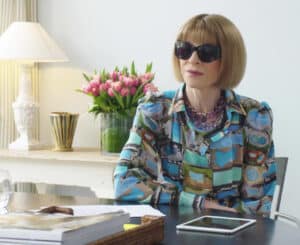
Wintour moved to New York in the 1970s, working in a progression of editorial positions, starting out as a junior fashion editor at Harper’s Bazaar in New York City in 1975, and moving on to stints as fashion editor for a women’s adult magazine, fashion editor for a new women’s magazine named Savvy, and fashion editor of New York. There, the fashion spreads and photo shoots Wintour had been putting together for years that had turned off her publishers finally began attracting attention, including the attention of the Conde Nast company.
Wintour attained her first editorship at Vogue in 1985, taking over its UK edition. Once in charge, she replaced many of the staff and exerted far more control over the magazine than any previous editor had, earning the nickname “Nuclear Wintour” in the process. Those editors who were retained began to refer to the period as “The Wintour of Our Discontent.”
Wintour became a troubleshooter for Conde Nast, returning to New York to take over House & Garden, whose circulation had long lagged behind its rival, Architectural Digest. Again, she made radical changes to staff and look, canceling $2 million worth of photo spreads and articles in her first week. She put so much fashion in photo spreads that it became known as “House & Garment,” and enough celebrities that it was referred to as “Vanity Chair,” within the industry. Here, she had less success.
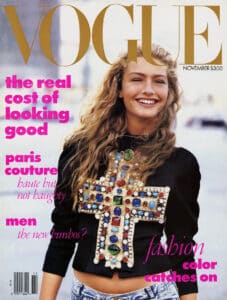
When Wintour took over the editorship of Vogue from Mirabella, a negotiation that took place behind the then-editor’s back, the magazine had been losing circulation to the recently introduced American edition of Elle. True to style, Wintour cut staff and made radical changes, most notably on the cover. In her first issue as Editor in Chief, dated November 1988, the cover featured a Peter Lindbergh photograph of 19-year-old Michaela Bercu in a $50 pair of faded jeans and a bejeweled jacket by Christian Lacroix worth $10,000. It was the first time a Vogue cover model had worn jeans; when the printer saw the film they called the magazine’s offices, thinking it was the wrong print. Years later, Wintour admitted the photo had never been planned as the cover shot. In 2011, when Vogue put its entire archive online, Wintour was quoted as saying, “I just said, ‘Well, let’s just try this.’ And off we went. It was just very natural. To me, it just said, ‘This is something new. This is something different.’”
That same philosophy, trying something new and different to help lead rather than just report on fashion is what continues to keep Wintour at the top of the Vogue masthead, and her and Vogue’s influence on the world of fashion, unmatched.
Collecting Vogue
Vogue readers save their issues, not so much as intentional collections but because they enjoy looking back at them and referencing them for inspiration. Yet there is value, sometimes 10 times the cover price, for older issues in good condition, and especially for special covers by noted illustrators and photographers, and collector editions.
Vogue, like many publications, started publishing special editions to commemorate moments in time, designer retrospectives, celebrities, and publication anniversaries in the 2000s. Collector’s Editions can be found on eBay for anywhere from the cover price up to $50 or more.
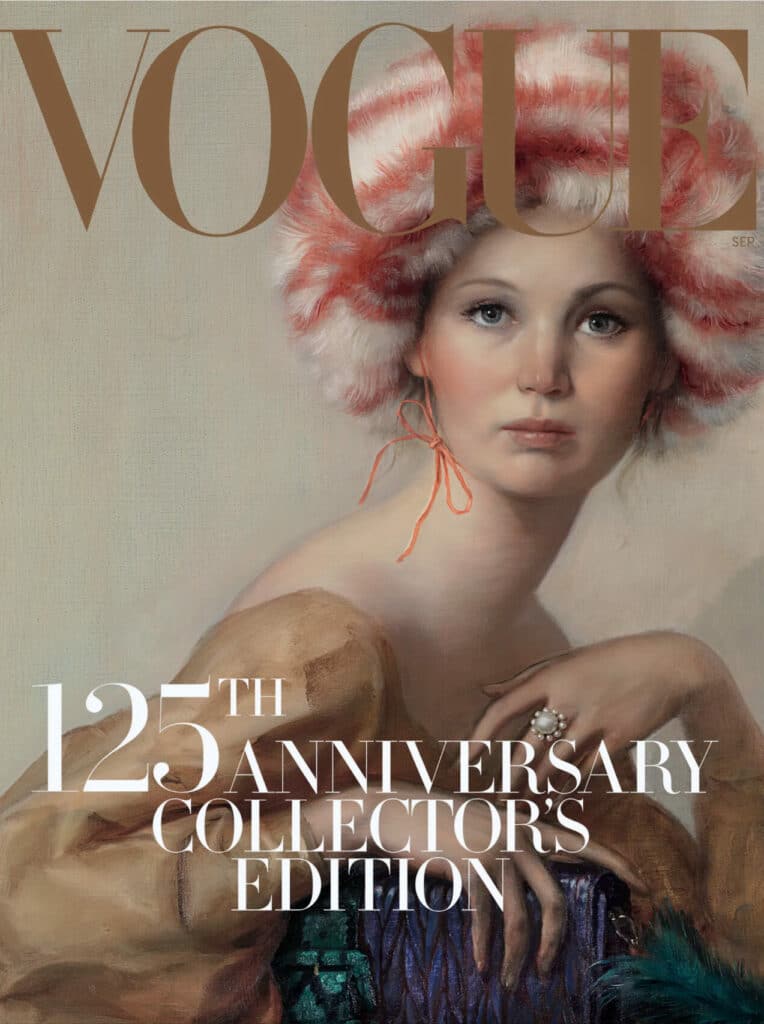
Rare, early cover issues in good condition command the highest value in the market. At thecarycollection.com, a September 15, 1935, illustrated cover by the fashion illustrator, “Eric,” is selling for $350, as is a September 1, 1938 cover featuring “Paris Openings & American Fashions,” cover artwork by Edouard Garcia Benito. On 1stDIBS, a 1934 Art Deco Vogue magazine illustration by Benito is selling for $5,000, and a Frank Xavier Leyendecker Millinery Number framed 1913 Vogue magazine cover is selling for $89,000 on 1stDIBS.
If you don’t have the room to hold a historic collection of vintage Vogue magazines but enjoy looking through back issues, Vogue now hosts its complete archive of magazines dating back to Conde Nast’s first publication of Vogue at www.archive.vogue.com.

![August 1954 cover featuring Young Americana Fashions for 1954 during the “Decade of [Jennifer] Daves”](https://journalofantiques.com/wp-content/uploads/2022/06/August-1954-771x1024.jpg)



Related posts: